Ayurveda treatment – holistic methods to restore health
Historically, we find that its distant predecessor with a thousand-year history is Ayurveda.
It is called holistic medicine (from the Greek holos – holistic), because it is based on the understanding of man as a single entity, composed of three inextricably linked levels: physical, emotional and spiritual.
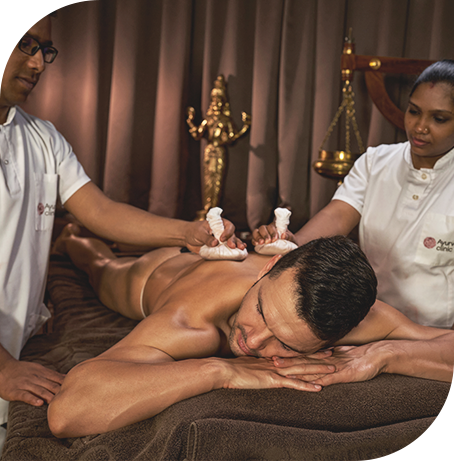
Differences between Ayurveda and classical medicine
- The body is divided into physiologically connected anatomical organs and systems.
- There is a division of different specialists – cardiologists, endocrinologists, orthopedists, nephrologists, neurologists, pediatricians, etc.
- Each specialist is responsible for a specific part of the body, often without taking into account the intervention of another colleague in the treatment process.
- The leading understanding is that the correct diagnosis is crucial for the effectiveness of treatment.
- The human body functions on the principle of unity, as its formation begins with a single cell – a product of fertilization of the egg by sperm.
- The notion of a direct connection of the body with the mind and the soul is embedded. When a disease disorder occurs, all three aspects of the human being are often affected.
- When the three energies – Vata, Pitta and Kapha – are in a balanced state, one enjoys health. When one, two or all of the energies are in a state of imbalance, a disease disorder begins.
- The Ayurvedic doctor is trained to follow the eight branches of Ayurveda at the same time. They are:
- Kaya Chikitsa (general medicine)
- Bala Chikitsa (pediatrics)
- Graha Chikitsa (psychiatry)
- Urdwanga Chikitsa (diseases of the head and throat)
- Shalya Chikitsa (surgery)
- Damshrta Chikitsa (toxicology)
- Chikitsa heat (geriatrics)
- Vrushya Chikitsa (reproductive medicine)
What is “cure for disease” in Ayurveda?
Each of the three main energies has its own distinctive characteristics and areas of more pronounced influence in the body.
1. Vata – The characteristics of Vata are:
- Rooksha – dryness
- Laghu – lightness
- Sheeta – cold
- Khara – roughness
- Sookshma – precision
- Chala – dynamism
It manifests itself in joint pain, muscle spasms, tingling in the extremities, feeling weak or hyperactive.
Impaired motor functions of the body are often associated with an imbalance of Vata energy.
2. Pitta – The characteristics of Pitta are:
- Sasneha – light oiliness
- Teekshna – deep penetration into tissues
- Ushna – heat
- Laghu – lightness
- Visram – bad smell
- Sara – poor mobility
- Drava – liquid
These include burning sensation, acidity and deep colic-like pain.
Indigestion, a feeling of heaviness in the abdomen, as well as hunger on an empty stomach are associated with energy imbalance Pitta.
3. Kapha – The characteristics of Kapha are:
- Snighdna – fat
- Sheeta – cold
- Guru – weight
- Manda – softness
- Shlakshana – smoothness
- Mrustna – jelly-like
- Sthira – immobility and stability
In this area the characteristics of Kapha energy are more often manifested: stagnant processes, deposition of oily, heavy and moist (mucus-like) liquid.
Secretion through the mouth and nose for colds, flu, colds, coughs and more. Usually associated with Kapha energy imbalance.
Integrity and unity
Changing each of these characteristics can lead to symptoms in the part of the body for which the energy is responsible.
Accordingly, we can understand the presence of pathological abnormalities, which are defined as a disease.
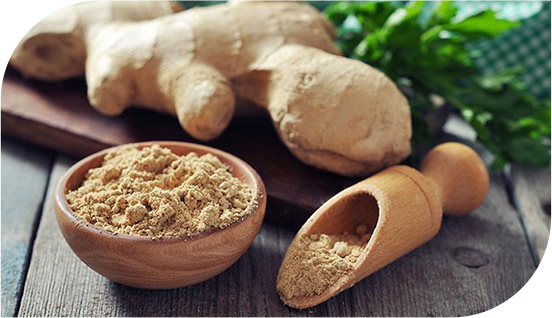
Diagnostic methods in Ayurveda
How the imbalance of basic energies affects the body?
Agni is a concept related to the power of digestion (“digestive fire”) – the breakdown of food and its metabolic transformation into all tissues.
Often, health disorders are caused by impaired lamb function.
There are several types of lambs associated with the influence of the three energies:
1. Sama agni – balanced and good digestion, in which all foods are fully degraded.
2. Vishama agni – a metabolic condition associated with the accumulation of Vata energy. This causes changes in digestion, which sometimes speeds up and sometimes slows down.
3. Tikshna agni – interference in the digestive process by increasing the energy of the pita. It leads to acceleration of metabolic processes, a feeling of increased acidity, rapid digestion and increased feeling of hunger.
4. Manda agni – slowing down metabolic processes due to the accumulation of more energy Kafa. Leads to slow digestion, a sharp decrease in hunger and reluctance to eat.
“Digestive fire” is extremely important for determining the metabolic state of the body, because this transforming force of the body is responsible for the transfer of energy to individual tissues.
Food is associated with the formation and maintenance of all structures that make up the body, so it is important to determine what is the state of transformation carried out in individual tissues – dhatu.
There are 7 levels of tissue transformation:
- Rasa – transformation from food pulp into plasma, lymph and intercellular fluid.
- This transforming zone is related to tissue nourishment.
- The leading element is water, the density is increased.
- The qualities are liquid, cold, moist, soft and heavy.
- This defines the Rasa date as the basic essence for maintaining Kapha energy.
- Rakta – transformation of the nutritional energy from the previous level, Race, to the formation of the blood.
- The qualities of Rakta are similar to those of Pitta energy.
- This transformation zone maintains the hot essence of the body.
- Mamsa – transformation of nutritional energy from the level of Rakta to the formation of muscle tissue.
- The main quality that is formed is strength, complemented by stability and density.
- Here we find the element earth and the penetration of the element fire.
- The energies Kapha and Pitta have a leading presence in this area.
- Medas – transformation of energy from the level of Mams to the formation of adipose tissue.
- There is a kind of storage of the elements of water and earth.
- This bodily essence is associated with softening, moisturizing and protecting the body from heat loss.
- The main qualities of Kapha energy are present again.
- Asthi – transformation of energy from the level of Honey to the formation of bone tissue.
- The leading quality is dharana, i.e. keeping the body upright.
- The strong influence of Vata energy can be found here.
- When Vata is increased, the density decreases.
- When Vata is lowered, Asti date is raised.
- Majja – transformation of energy from the level of Asti inwards, to the bone marrow or nerve tissue.
- This is the substance that fills the bone cavity.
- Eye tissue and brain also belong to the Maija date.
- The main quality is poorana, ie. filling the bone void.
- Kapha energy has a strong influence here.
- Shukra – the essence of Maija, which passes into the reproductive tissue of the germ (cells of men and women).
- The main quality is garbhotpadana – reproduction of a generation.
- Kapha energy also has a strong influence here.
Sama (balanced state), Kshaya (reduced dosha) and Vriddhi (increased dosha).
What diseases does Ayurveda cure?
- Sadhya – curable:
- Sukha Sadhya – easily curable;
- Krichra Sadhya – difficult to cure.
- Asadhya – incurable:
- Yapya – maintenance with Ayurvedic medicines;
- Anupakrama – completely incurable.
Depending on the state of the three main energies Vata Pita and Kafa, diseases are subdivided into:
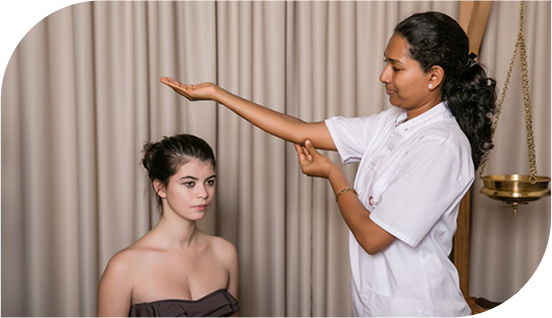
Nanatmaja Vyadhi
- Vata Nanatmaja Vyadhis – diseases caused by an imbalance of Vata energy alone. They cover about 80 types of violations.
- Pitta Nanatmaja Vyadhis – diseases caused by an imbalance of Pitta energy alone. They cover about 40 types of violations.
- Kapha Nanatmaja Vyadhis – diseases caused by an imbalance of Kapha energy alone. They cover about 20 types of violations.
Samanya Vyadhi
In this group we can talk about:
- 8 types of Udara Rogas – diseases in the abdominal area;
- 8 types of Mutraghata – diseases with urinary retention;
- 8 types of Ksheera Doshas – disorders of breast milk;
- 8 types of Veerya Vikaras – disorders of semen and reproductive fluid;
- 7 types of Kushta – skin diseases;
- 7 types of Prameha Pidakas – skin problems due to diabetes;
- 7 types of Visarpa – diseases associated with erysipelas (“red wind”) or herpes;
- 6 types of Atisara – gastrointestinal disorders;
- 6 types of Udavarta – disorders of suppression of the need to urinate and defecate;
- 5 types of Gulma (Gulma) – tumor processes in the abdominal cavity;
- 5 types of Pleeha – processes associated with enlarged spleen;
- 5 types of Kasa – diseases with the leading symptom of cough;
- 5 types of Shwasa – conditions associated with dyspnea and respiratory disorders;
- 5 types of Hikka – conditions accompanied by hiccups;
- 5 types of Trishna – disorders accompanied by excessive thirst;
- 5 types of Chardi – disorders related to vomiting;
- 5 types of Aruchi – problems related to loss of appetite and taste;
- 5 types of Shiroroga – disorders accompanied by headache;
- 5 types of Hridroga – heart disease;
- 5 types of Panduroga – different types of anemia;
- 5 types of Unmada – states associated with delusions;
- 4 types of Apasmara – conditions associated with epilepsy;
- 4 types of Netra roga – eye diseases;
- 4 types of Karna Roga – diseases of the ears;
- 4 types of Pratishyaya – conditions associated with colds;
- 4 types of Mukha roga – diseases localized in the mouth;
- 4 types of Grahani Roga – diseases of the duodenum and impaired digestion;
- 4 types of Mada (Mada) – conditions associated with intoxication;
- 4 types of Murcha – disorders related to seizures and loss of consciousness;
- 4 types of Shosha – conditions associated with rapid weight loss;
- 4 types of Napunsakata – disorders related to impotence;
- 3 types of Shotha – disorders related to flow;
- 3 types of Kilasa – disorders related to leukoderma (vitiligo);
- 3 types of Raktapitta – conditions associated with bleeding;
- 2 types of Jwara – disorders associated with fever;
- 2 types of Vrana – diseases associated with the appearance of wounds and the development of ulcers;
- 2 types of Ayama – disorders related to posture;
- 2 types of Gridhrasi – diseases of the sciatic nerve;
- 2 types of Kamala – disorders associated with jaundice;
- 2 types of Ama – conditions associated with an immature state of digestion;
- 2 types of Vatarakta – disorders associated with gout;
- 2 types of Arsha – disorders associated with the appearance of hemorrhoids;
- Urustambha – a condition associated with muscle stiffness;
- Sanyasa – a condition similar to coma or syncope;
- Mahagada – perversions on a mental basis;
- 20 types of Krimi Rogas – intoxications with parasites;
- 20 types of Prameha – conditions associated with urinary disorders and diabetes;
- 20 types of Yoni Vyapat – diseases related to the vagina.
This group also includes diseases caused by external factors – Agantu Vyadhis:
Classification of diseases in Ayurveda
Prabhava Bheda: an opportunity to treat the disease as follows
- Saadhya Vyadhi – treatable diseases;
- Asaadhya Vyadhi – incurable diseases.
Bala Bheda: power of the disease
- Mrudu Vyadhi – mild diseases with mild symptoms;
- Daaruna Vyadhi – severe diseases with a high level of complications.
Adhishtana Bheda: The affected area of the body
- Mano Adhishtita Vyadhi – diseases affecting the mind (mental disorders);
- Shareera Adhishtita Vyadhi – diseases affecting the body (physical disorders).
Nimitta Bheda: cause of the disease
- Swa-dhatu vaishamya nimitta vyadhi – disorders of the supporting elements in the body and diseases caused by an imbalance of energy, tissue (date) or sub-tissue (upadatu).
- Aagantu nimitta vyadhi – diseases caused by external factors such as trauma, poisoning, etc.
AashayaBheda: Affected internal organs
- Aamashaya Samuttha Vyadhi – diseases of the stomach and small intestine;
- Pakwashaya Samuttha Vyadhi – diseases of the colon.
Shalya Bheda: surgical classification
- Shastra Sadhya – curable through surgery;
- Swedadi Kriya Saadhya – curable by using methods such as scorching, hot steam, etc.
Prakruta-Vaikruta Bheda: influence of seasonal changes
- Prakruta Vyadhi – natural diseases. Each of the energies has a season in which it naturally deteriorates and is likely to cause disease.
- Vaikruta Vyadhi – unnatural diseases. In them, the energy, which is not naturally disturbed in a certain season, causes disease in the same.
Anubandhya - Anubandha: connection
- Anubandhya or Swatantra Vyadhi – primary diseases due to direct external influences.
- Anubandha Vyadhi or Paratantra Vyadhi – secondary diseases caused by the signs and symptoms of another disease.
Diseases related to karma or human deeds
- Pratyutpanna Karmaja – diseases that occur as a result of acts or sins committed during the current birth;
- Poorvakarmaja Vyadhi – diseases arising from acts or sins committed in previous incarnations.
Aadhyatmika Vyadhis - manifesting at the level of body and mind
- Adibala Pravritta Vyadhis (Adibala Pravritta Vyadhis) – hereditary diseases caused by disorders of sperm and eggs.
- Janmabala Pravritta Vyadhis (Janmabala Pravritta Vyadhis) – diseases that occur in children due to improper nutrition and lifestyle of the mother during pregnancy.
Kala Bala Pravritta: seasonal diseases
- Vyapanna Ritu Kruta – disorders caused by unusual seasonal fluctuations;
- Avyapanna Ritu Kruta – diseases due to imbalance of energy Vata, Pitta and Kapha, occurring naturally during different seasons.
Daivabala Pravritta: diseases caused by anger, curses and contagious
- Vidhyut Ashanee Krita – diseases and / or injuries caused by natural disasters, such as lightning, thunderstorms, falling asteroids and comets, etc .;
- Pishaachaadi Krita – diseases caused by pishacha – sinister supernatural forces such as ghosts, spirits, demons and more.
- Samsargaja – caused by the presence of people who give us a curse, as well as if we are close to or have direct contact with those suffering from infectious diseases
- Aakasmika – diseases with unknown causes that appear suddenly.
Swabhaava Bala Pravritta - natural body conditions
- Kaala Krita – conditions that occur at the right time: hunger, need for sleep; aging, natural death after the age of 100, etc.
- Akaala Krita – disorders that occur at the wrong time. They are due to our carelessness towards ourselves and appear when we follow improper eating practices and lifestyle.
-
Aadhi Bhoutika Vyadhis: injuries
- Shastra Krita Vyadhis – injuries caused by weapons or tools (stick, wood, arrow, sword, stone, weapon, etc.)
- Vyala Krita Vyadhis – injuries caused by animals: bites (teeth), scratches (nails), stings (horns), and poisoning (poison).
Nija, Aagantuja and Maanasa Vyadhis
- Nija Vyadhi – diseases caused by disturbed energies with physical manifestation;
- Aagantuja Vyadhi – diseases caused by microorganisms, toxic air, polluted water, fire, trauma and other external causes;
- Maanasa Vyadhi – diseases caused by disturbed energies on a mental and intellectual level.
Methods of treatment in Ayurvedic medicine
The treatment proceeds in two directions:
- SHODHANA – principle of withdrawal;
- SHAMANA – balancing the disturbed energies.
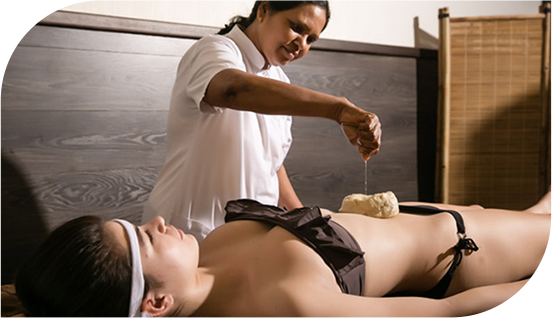
The Shodan Line
- Udharva bhag hara – directing energy from the upper part of the body (head) to the lower part of the chest by:
- Vomiting – Vamana
- Retention of healing oil in the scalp – Shirovasti (Shirovasti)
- Cleansing the cranial cavity, head and neck area by pouring healing oil in the nose – Nasya).
- Adhobhaghara – exerting an impact from the lower part of the chest down through:
- Induced laxative effect – Virechana
- Cleansing the colon with an enema – Vasti.
- Ubhayato bhag hara – withdrawal of energy from both the upper and lower body.
Stages of Shodhana Chikitsa
- Purvaкarma – preparing the body for cleansing, including methods:
- Snehana – internal and external oiling of the body
- Svedana – heat therapies that cause warming and sweating of the body.
- Panchakarma – includes the five main withdrawal (cleansing) therapies:
- Vamana
- Virechana
- Vasti
- Nasya
- Raktamokshana
- Paschatkarma – therapies and recovery products after Panchakarma.
The Line of the Shaman
This technique aims to improve the action of lambs and the digestive system as a whole.
Shaman is performed through:
- Bahya Samshamana:
- External impact with herbal powders
- Watering with medicinal mixtures
- Therapies with medicinal herbal oil (douching, anointing)
- Gargling and gurgling with healing oil, etc.
- Aabhyantara Samshamana:
- Internal effects with medicinal products that break down toxins and fat deposits
- Use of aphrodisiacs and immune boosting products
- Use of products that cleanse the body from poisoning.
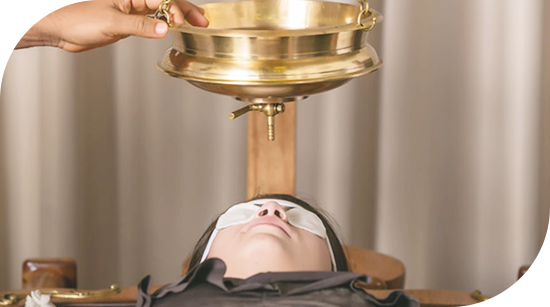
Shamanic methods
- Deepan – increase lambs to stimulate appetite). Includes prescribing healing herbal ghee oil, eating spicy and high-fat foods in order to reduce the deterioration or increase the weakened energy.
- Pachan – includes methods that support the process of processing toxic waste (ama). There are various herbal combinations that help absorb undigested toxins.
- Kshuda Nigrah – general or selective fasting to balance energies in the body – a condition known as Tridosha. Especially useful method in diseases of the digestive tract.
- Thrisha Nigrah – a method of treating water retention problems that helps remove toxins that have accumulated in the kidneys and urinary system.
- Vyayam – exercise in various forms for disorders such as obesity, digestive problems, diabetes and more. Sometimes, although rarely, it can be combined with drugs.
- Atap Sevan – heat exposure from sunbathing for skin diseases, rheumatism or arthritis-related conditions. This treatment calms the Vata energy.
- Marut Sevan – use of fresh air to treat asthma and tuberculosis. According to Ayurveda, breathing is prana, or life, and the therapy is suitable for all who do not have the opportunity to go through Shodana (Panchakarma).
Procedures followed by Ayurvedic doctors
1. Conducts individual consultation with the patient.
2. Determines prakruti (dominant energy at birth) and dosha (imbalance in energy state).
3. Gives recommendations for lifestyle changes to correct the energy imbalance that caused the health disorder – diet and exercise, specific recommendations with individual focus.
4. Prescribes Ayurvedic medicinal herbal products.
5. Prescribes Ayurvedic therapies or recommends exposure to Panchakarma procedures.
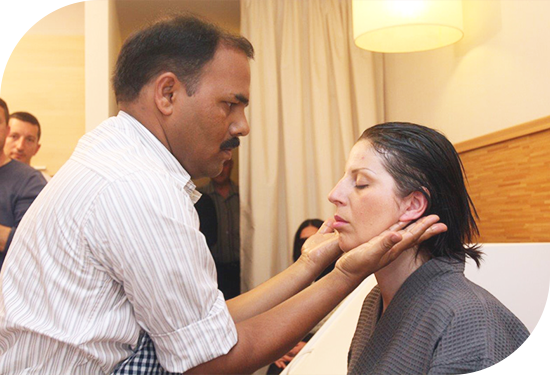
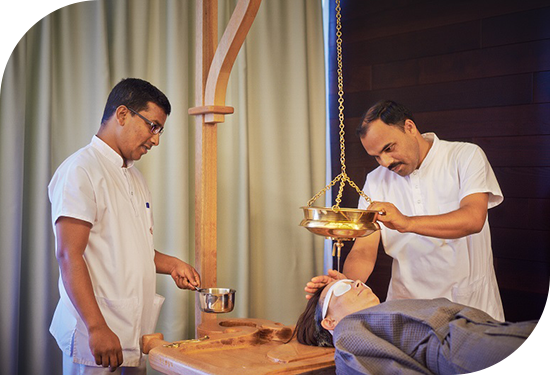
Duration of Ayurvedic exposure
The duration of the Ayurvedic effect depends on the competence of the Ayurvedic doctor and the professionalism of the Ayurvedic therapist, as well as on the perseverance of the patient.
The Ayurvedic effect is determined individually for each patient, with a minimum duration of 3 months and a maximum of unlimited.
In severe diseases, a life-sustaining effect is applied, which is associated with daily intake of Ayurvedic medicinal herbal products to alleviate the condition, which can last a lifetime.
Ayurvedic products used for the healing effect
Types of traditional Ayurvedic medicines
2. Asava and Arishta – naturally fermented herbal liqueurs;
3. Avaleh – sweet paste or marmalade of herbs mixed with unrefined sugar, sweet juices or herbal decoction;
4. Bhasma – fine powder prepared after firing metals, minerals and other substances at high temperature;
5. Churnam – dried herbs, ground into a powder, which is sifted through a fine sieve and can be mixed with other ingredients depending on the recipe;
6. Ghritam – medically purified cow’s oil, enriched with herbs;
8. Kwatham – herbal decoctions in form of tablets;
9. Kashayam – herbal decoctions;
10. Pak – thick herbal paste;
11. Ras Rasayan – herbal and mineral products;
12. Thailam – medicinal herbal oils;
13. Vati (Vati, Vatika) – tablets made from herbs, minerals or a combination of both;
14. Gulika – ball-shaped pills made from herbs, minerals or a combination of both.
How nutrition changes?
According to Ayurveda, what matters is not what food you eat, but whether you can break it down and digest it.
Individual recommendations for nutrition
1. Meals – breakfast, snack, lunch, snack, dinner;
2. Which foods should include the individual meals;
3. Which foods are recommended for free consumption, without restrictions;
4. Which foods are good to eat more often and in larger quantities;
5. Which foods should be avoided or consumed infrequently, in minimal amounts.
Types of dietary foods
- Of animal origin – meat, fish, eggs, dairy products and fresh milk;
- Of plant origin – fruits, vegetables, seeds, nuts, legumes.
In more serious disorders and weakness of lambs, the intake of products of animal origin is significantly reduced or stopped for a certain period. There may be a restriction on some of the products of plant origin.
Nutrition according to the taste of food
1. Foods with sweet taste – reduce Vata and Pitta, increase Kapha;
2. Foods with a sour taste – reduce Vata, increase Pitta and Kapha;
3. Foods with salty taste – reduce Vata, increase Pitta and Kapha;
4. Foods with bitter taste – increase Vata, decrease Pitta and Kapha;
5. Foods with spicy taste – increase Vata and Pitta, decrease Kapha;
6. Foods with astringent taste – increase Vata, decrease Pitta and Kapha.
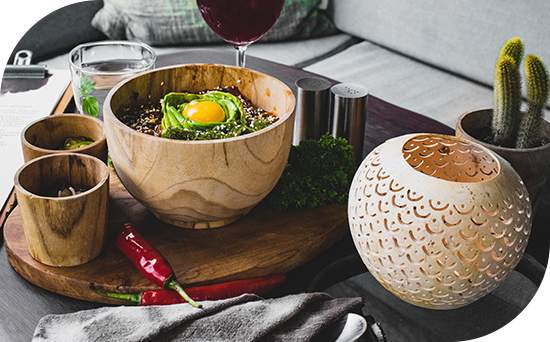
What changes occur during the healing process?
During the healing process, each organism goes through different, strictly individual sensations.
Notice – in Ayurveda the feeling is leading!
The transition from imbalance to balance leads to improved functions of various systems and tissues in the human body.
Digestive system
- There is a feeling of lightness in the abdomen after eating;
- Reduces the tension from the formed gases in the small intestine and colon;
- Defecation is regulated.
Cardiovascular system
- Improves blood circulation;
- Warm cold palms and soles;
- Improves skin color;
- Stabilizes heart rate;
- Normalizes blood pressure.
Nervous system
- Improves nerve conduction;
- Feelings of lightness, joy and happiness appear;
- Vision is enhanced and hearing is improved;
- Improves the work of taste buds and smell;
- Increases the tactile sensitivity of the skin.
Muscle tissue
- Increases muscle strength and endurance;
- Improve motor responses.
Musculoskeletal system
- Joint pain decreases and joint mobility increases;
- Improves bone density.
Endocrine system
- The endocrine glands begin to function better;
- Reduces hormonal imbalance.
Female reproductive system
- Increases the reproductive capacity of women of childbearing age;
- The monthly cycle is regulated;
- Reduce or completely disappear various formations in the uterus and ovaries;
- Menopause is delayed or its symptoms are reduced.
Male reproductive system
- Improves sperm production and quality;
- Increases libido.
Ayurveda does not need to be proven and tested because it has stood the test of time – the most uncompromising criterion for its significance and value to humanity.


